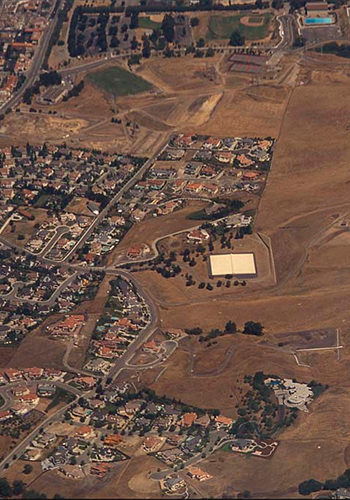SPRAWL COSTS THE U.S. $1 TRILLION ANNUALLY
Not only does sprawl increase the distance between people’s homes and jobs, a new study by the Global Commission on the Economy and Climate found that it also costs the American economy more than $1 trillion annually. These costs include increased spending on infrastructure, public services, and vehicles. The most sprawled-out American cities spend an average of $750 on infrastructure per person each year, while the least sprawled cities spend closer to $500. Compared with smart growth communities, which are denser, walkable developments, sprawl typically increases per capita land consumption 60-80 percent and motor vehicle travel by 20-60 percent.
The study found that sprawl also affects about two-thirds of city expenses, “by requiring longer road and utility lines, and increasing travel distances needed for policing, emergency response, and garbage collection.” Some of the largest costs are associated with city government vehicle travel.
According to the study, much of Americans’ preference for sprawl is rooted in underlying social and economic factors — “such as the perceived safety, affordability, public school quality, prestige and financial security of suburban neighborhoods” — rather than the physical features of sprawl. The 2013 U.S. National Association of Realtors’ community preference survey found that most Americans prefer single-family homes and place a high value on privacy. However, interestingly, they also desire the convenience of walkable, mixed-use communities with shorter commutes and convenient access to public services found in cities. As the U.S. continues to grow and urbanize, cities will have to expand to accommodate new people but also reconcile these conflicting desires.
Looking to the future, the study defines three categories of cities that will each need to address sprawl differently:
Unconstrained Cities
Unconstrained cities, such as most American and African cities are surrounded by “an abundant supply of lower-value lands” and have room for significant expansion. According to the study, these cities should maintain strong downtowns surrounded by higher-density neighborhoods with diverse, affordable housing options. Excessive vehicle use should be discouraged by creating streets that include adequate sidewalks and crosswalks, bike infrastructure, and bus systems.
Semi-constrained Cities
Semi-constrained cities, mostly found in Europe and Asia, have a limited ability to expand. These cities should expand through a combination of infill development and modest expansion along major transportation corridors. New housing should consist of townhouses and mid-rise multi-family housing, which can reduce the costs of sprawl. Similar transportation policies to those suggested for unconstrained cities, which can help further discourage car use, should also be implemented in semi-constrained cities.
Constrained Cities
Constrained cities are those that cannot significantly expand, such as city-states like Singapore and Hong Kong. In these cities, most new housing will be multi-family, and fewer households will own cars. These cities require strong policies that improve livability in dense neighborhoods, including: “well-designed streets that accommodate diverse activities; adequate public green space; building designs that maximize fresh air, privacy, and private outdoor space; transport policies that favor space-efficient modes; and restrictions on motor vehicle ownership and use, particularly internal combustion vehicles.” Seoul has already demonstrated that with good planning, high density neighborhoods can offer a good quality of life.
Developing cities in Asia and Africa are poised to establish more sustainable transport and land use development patterns, avoiding the mistakes made by the U.S. Although sprawl-related costs may appear to lower in developing countries — due to lower incomes and land prices — their share of household and government budgets, and their relative impacts on economic development, are greater. Emerging cities must implement policy reforms that result in better walking and cycling conditions. Improving public transit services in developing country cities is particularly important.
The study maintains that in order “to increase economic productivity, improve public health, and protect the environment,” dense, urban neighborhoods need to be considered just as safe, convenient, and attractive as their suburban counterparts. In all types of cities, ensuring that neighborhoods are livable and cohesive is crucial. Designing attractive, multi-functional streets and public parks and providing high-quality public services are all major components of reaching this goal.










Follow Us!